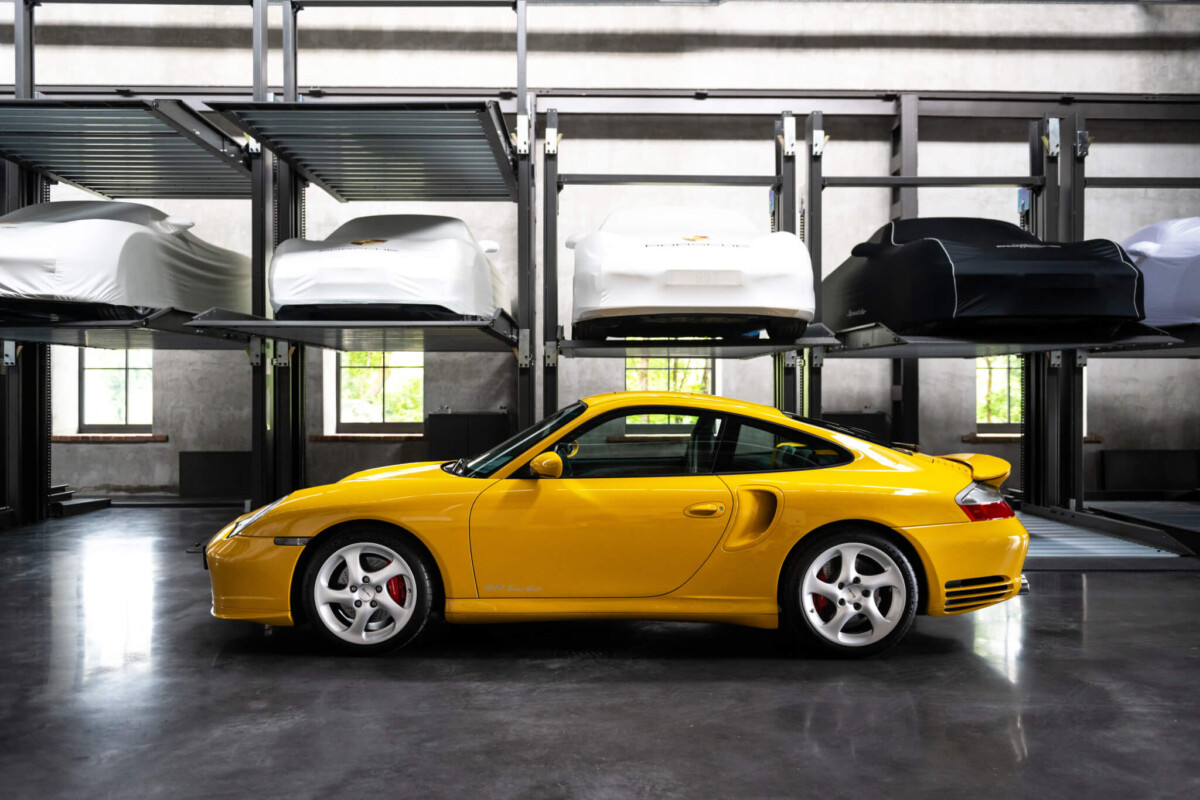
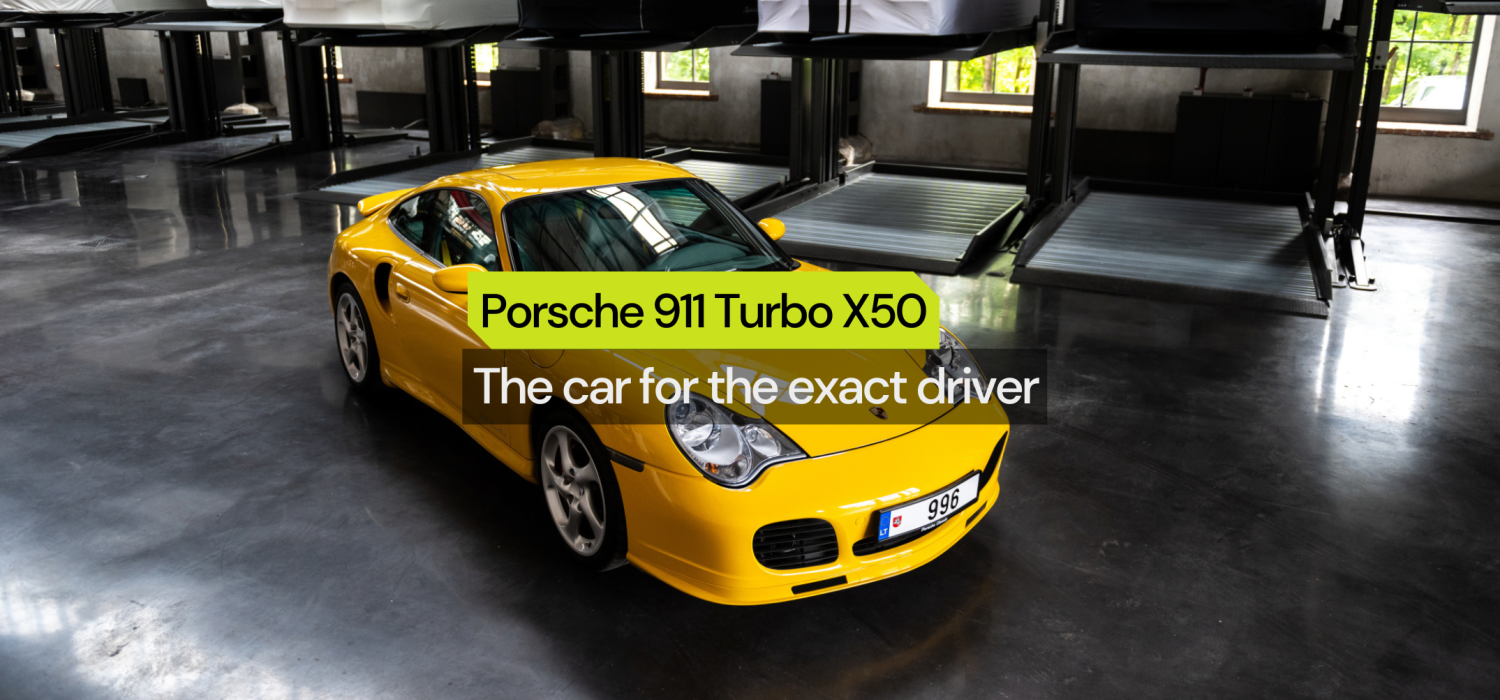
Porsche 911 Turbo X50 — the car for the exact driver
When these were new, they overwhelmed the senses. In its day, the 996‑generation Porsche 911 made people turn their heads not only because of the fresh shape, but because you were lucky to stare at it for more than a second before it shot off. Especially if it was a 911 Turbo: once the driver buried the throttle, it disappeared faster than you could say the full model name.
It’s worth a long look, particularly when the Turbo is something more exotic. There weren’t many to begin with, and fewer still with the famous X50 pack. In North America, a big market for these, Porsche sold only 1,124 examples of the 911 Turbo X50. The global number is certainly not growing, and demand, even for standard 996s, has already started to rise. Many 996 Turbos were cabriolets, with automatic gearboxes and safe colour combos – black or cream interiors and silver or black exteriors. Enthusiasts are waking up to what the 996 does well and the spotlight is moving to the most refined and rare versions. One of those is right here: a Speed Yellow 911 Turbo with the X50 pack, a six‑speed manual, and a jade‑green interior with yellow stitching, the sort of spec you can count on one hand in the collectors’ market.
For a long time the 996 was the easiest way into 911 ownership, but the 25‑year threshold is bringing late‑production cars into official “historic” territory and, for the U.S., into the easier import window. Even though the 996, like this yellow Turbo, was sold in North America, that doesn’t stop collectors elsewhere. For a special model with real weight in Porsche history and strong standing among enthusiasts, they’ll go to serious lengths to get one, even if it means shipping it to the other side of the world.
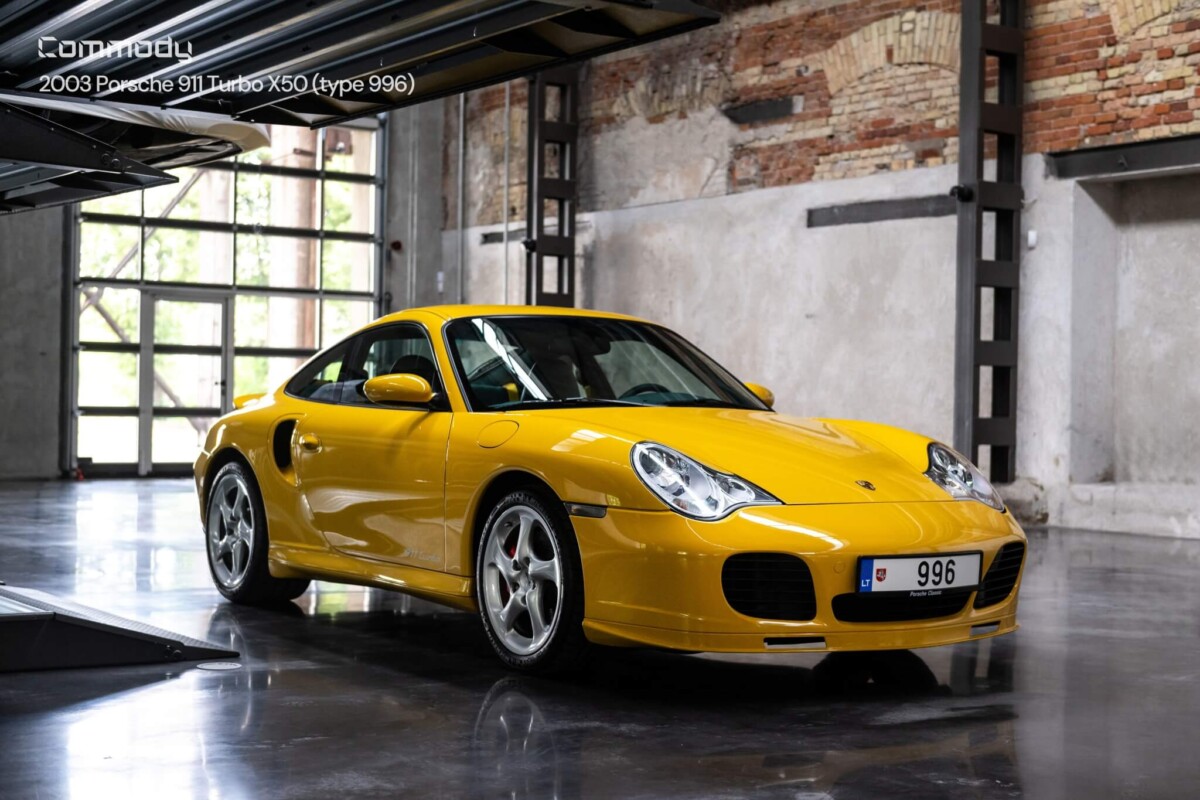
History
It’s easy to admire the 911’s nostalgic lines and irreplaceable sound today, but the beginning was different. Launched in 1997, the 996 upset plenty of purists: some engineering tradition gave way to solutions for a new era. Out went air-cooling, in came water-cooling, a controversial design language and the first all-new 911 body architecture since 1963.
As the 21st century approached, there was a broad urge – including in car design – to make something distinctive, unexpected and a clean start. The 996 captured that feeling perfectly. Surfaces that flow like water, the lights, the cabin – all create a dynamic, lively shape that underlined the big engineering changes.
The important traditions didn’t disappear: a strong engine in the back, that magical chassis balance, the unmistakable silhouette and a precise manual gearbox. Nor did the wild Turbo version, which pushed the car past 300 km/h – a genuinely magic number at the turn of the millennium.
The X50 power kit added another 30 hp to the 911 Turbo, with larger turbos and intercoolers, a stronger clutch, a new exhaust and extra body bracing. With a manual gearbox, these cars do 0–100 km/h in 4.0 seconds. At the time, the 911 Turbo X50 was among the fastest cars in the world.
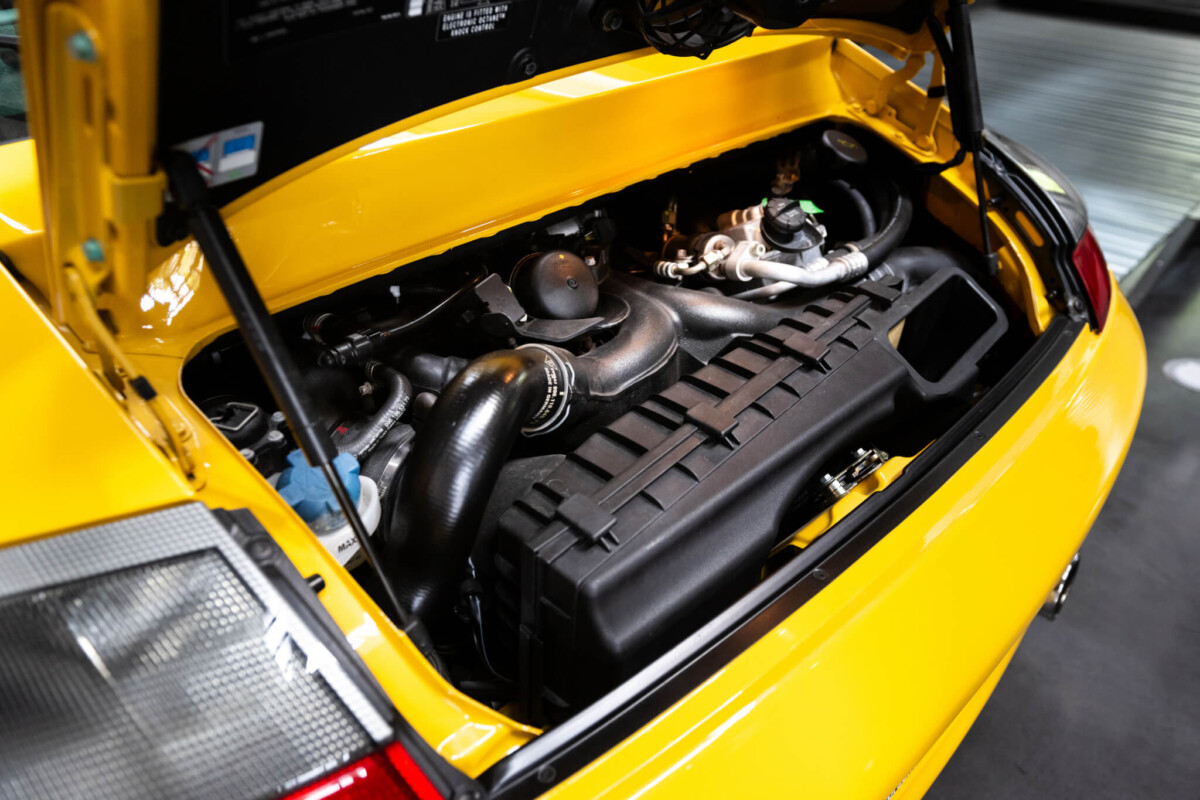
Engine
All those numbers, and the addiction they cause, start under the rear lid: a 3.6-litre twin-turbo flat-six with 24 valves. It’s related to the 911 GT1 Le Mans engine and carries the name of engineer Hans Mezger, who not only developed this unit but also worked on the very first 911s and the 917’s Le Mans powerplant. The engine pulls you in even before you fire it up. Its philosophy is simplicity, strength and a bit of a beast’s character. The twin-turbo “Mezger” makes a noise many bigger, more powerful engines can’t match.
And the numbers don’t lie. Stamp on the throttle and the power hits like thunder. Bury it in second and third and those 450 turbo horses howl like a northern wind, sweeping the speedo needle along in a hurry. There’s shove even low down – the kind that pins you back and gives you that good kind of nerves.
Behind the wheel
At idle the Turbo has an unmistakable growl. As the revs climb, the sound stacks in layers like a layer cake. When the turbos wake and you pass about 3,000 rpm, the floodgates open and the horizon starts coming at you faster. The initial vibration and raw mechanical edge give way to a full-on turbo tornado just before the engine reaches its 6,700 rpm peak. Under acceleration the mass over the rear presses the tyres down, and the front driveshafts – fed through a viscous coupling – help keep everything balanced. Straight or corner, 100 km/h or 200 km/h, the refinement and response stay the same.
Drilled discs with four-piston callipers bring you back to earth and shed speed instantly. Turn in, and things calm down – the hot turbos hush, the intake noise fades. The firm suspension takes a bend without drama from weight transfer. The all-wheel-drive grip, and the point where it finally lets go, sit at a level that’s frankly hard to beat.
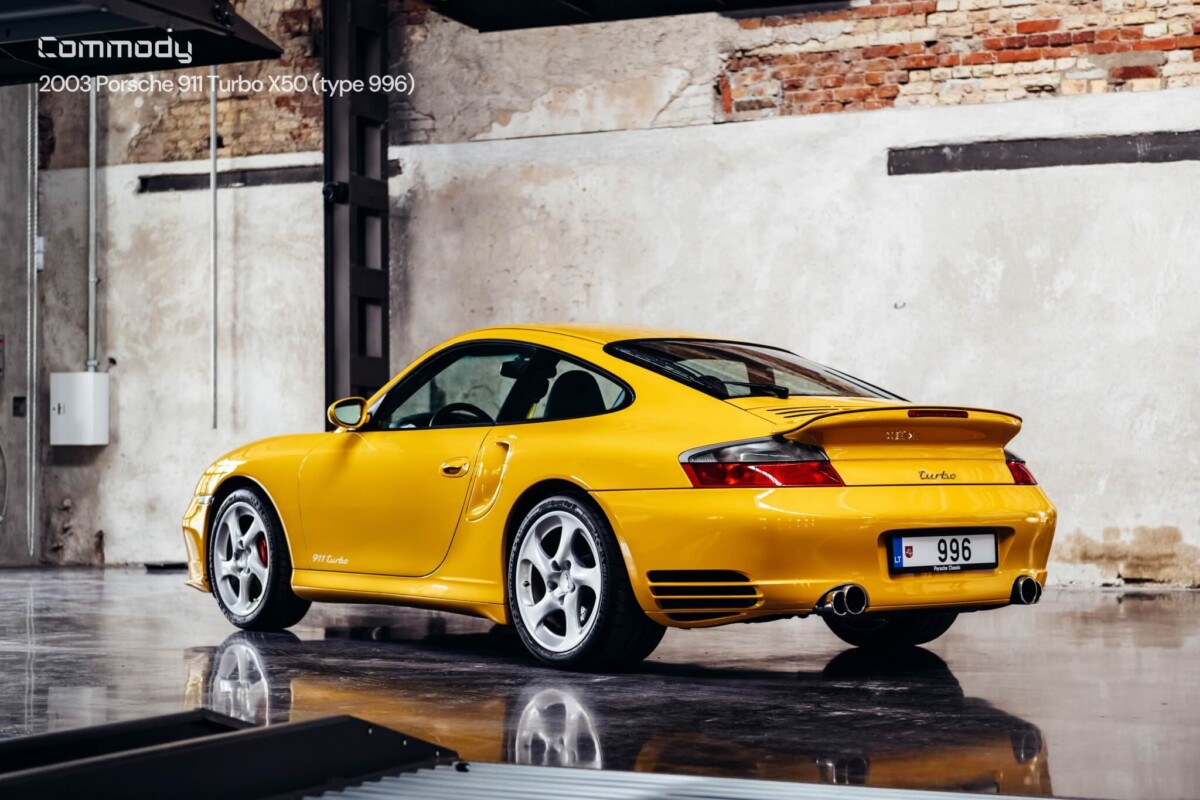
Times change
This is a machine for precise people. 911 collectors usually aren’t chasing a single sensation to scratch one itch. A 911 Turbo X50 can embarrass far pricier rivals on a circuit, then be the ideal run-to-the-shops transport – or simply art for the eyes. There’s a lot to enjoy visually. Deep green leather with yellow stitching tones down the bright yellow exterior. The cabin gets a yellow instrument cluster, a rare TechArt steering wheel, and yellow belts. For the soundtrack: a TechArt exhaust as well.
In today’s context, the 996 Turbo isn’t just a modern classic; it’s a true connoisseur’s car. There are very few cars left that offer such properly raw, alive sensations. A vivid, characterful 911 like this tickles every nerve ending – and if yours are asleep, it wakes them up. In the car world, that’s valued very highly.
Which leads to another point. Despite this 911’s rich portfolio – immaculate condition, high-level engineering and a very rare spec – the essence is how all of it ties together. The 996 Turbo’s strengths have pulled a once-overlooked, even controversial model into the ranks of the best modern collectable cars. It’s become a rational investment. Values are rising because the tactile 996 Turbo still delivers that magical analogue driving experience, woven together with modern, but not overdone German engineering and real motorsport soul. That mix makes this car a genuinely unique investment opportunity.
